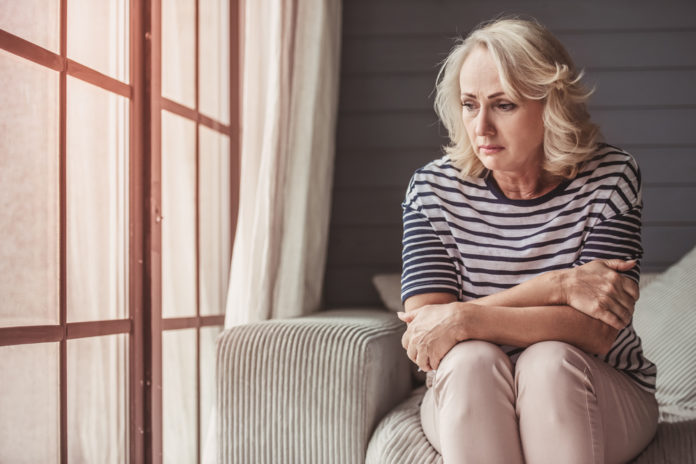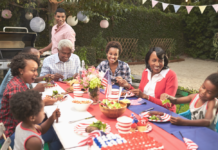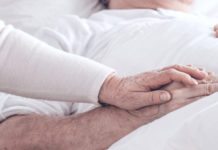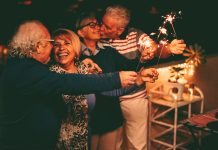Anxiety can be a natural, even productive feeling that ebbs and flows and everyone faces, including the senior population. But when it starts to interfere and disrupt daily routines and life in general, it is considered to be an unhealthy psychiatric disorder.
From classifying anxiety disorders to recognizing anxiety attack symptoms, get acquainted with the identifiers and treatments of anxiety in the elderly.
Common Elderly Anxiety Disorders
The most common anxiety disorders are generalized anxiety disorder and phobias, though seniors also commonly experience panic disorder, post-traumatic stress disorder, and obsessive-compulsive disorder:
Generalized Anxiety Disorder (GAD)
According to the Anxiety and Depression Association of America, generalized anxiety disorder (GAD) is the most common anxiety disorder among older adults. General anxiety disorder is characterized by chronic and persistent worry about a number of different things, including routine life events and activities, and frequently anticipate the worst in all scenarios.
Rather than anxiety related to a specific stressor or for a limited period of time, GAD is diagnosed when a person finds it difficult to control worry on more days than not over a 6-month timespan.
Phobias
Phobias are extreme, disabling and irrational fears of something that poses little to no actual threat in reality, and often cause avoidance of objects or situations. Seniors may face specific or social phobias:
Specific Phobias
A specific phobia is an intense, irrational fear of a place, thing or event, which may be exclusive to heights, tunnels, bridges, highway driving, tight spaces, flying, spiders, and snakes. Phobias more common to seniors include the fears of death, disasters related to family and friends, and medical procedures.
Social Phobias
A social phobia is when an individual feels tremendously anxious and self-conscious in ordinary social situations. An older adult might feel intense, persistent, and chronic fear of being judged by others and of doing things that will trigger embarrassment, which may be related to remembering someone’s name. Social phobias and anxiety disorders often cause seniors to isolate oneself and makes it difficult to sustain close relationships.
Panic Disorder
Those with panic disorder have sudden anxiety or panic attacks, in which sudden feelings of terror strike repeatedly without warning. Commonly confused with a heart attack or stroke, anxiety attack symptoms include chest pain, a pounding heart, heart palpitations, shortness of breath, weakness and dizziness, abdominal discomfort, and fear of dying.
Anxiety attack symptoms can occur at any given time, including while sleeping, and usually peaks within 10 minutes, though some symptoms may last longer.
Post-Traumatic Stress Disorder (PTSD)
Post-traumatic stress disorder is characterized by persistent symptoms that occur after experiencing a traumatic event, which may be linked to natural disasters, violence and abuse, or any sort of threat that comprises a sense of survival or safety.
Individuals experience symptoms related to the trigger, including nightmares, flashbacks, easy agitation and distraction, and feeling numb, angry, depressed, and irritable.
Obsessive-Compulsive Disorder
Obsessive-compulsive disorder (OCD) is a common and chronic long-lasting disaster in which people have uncontrollable, reoccurring, and unwanted thoughts (obsessions) or rituals and behaviors (compulsions).
Performing the rituals, such as hand washing, counting, checking and cleaning, is in hopes to prevent such obsessive thoughts or make them completely disappear.
How to Identify and Treat Anxiety in the Elderly
Doctors once believed that anxiety disorders declined with age. But experts now recognize that age and anxiety are not mutually exclusive: Anxiety is common among the senior population and many older adults with a current anxiety disorder had one in their younger year.
The incongruence is likely based on the reluctance of seniors to report anxiety disorders and related symptoms, as mental illness was previously stigmatized. Seniors also tend to emphasize physical complaints rather than psychiatric symptoms.
Considering the lack of self-reporting from seniors, it is imperative as a caregiver to be able to identify anxiety in the elderly and promptly seek out professional care – the earlier it is identified and addressed, the easier it is to manage the disorder and symptoms.
Risk Factors for Anxiety Disorders
Anxiety in older adults may be linked to several important risk factors, which may include the following according to Mental Health America:
- Chronic medical conditions, especially chronic obstructive pulmonary disease (COPD), cardiovascular disease including arrhythmias and angina, thyroid disease, and diabetes
- Overall feelings of poor health
- Sleep disturbances
- Side effects of medications (i.e. steroids, antidepressants, stimulants, bronchodilators/inhalers, etc.)
- Alcohol or prescription medication misuse or abuse
- Physical limitations in daily activities
- Stressful life events
- Negative or difficult events in childhood
- Excessive worry or preoccupation with physical health symptoms
Anxiety Disorder Symptoms and Signs
The American Association for Geriatric Psychiatry (AAGP) warns anxiety in the elderly may be recognized by:
- Excessive worry or fear
- Refusing to do routine activities or being overly preoccupied with routine
- Avoiding social situations
- Overly concerned about safety
- Racing heart, shallow breathing, trembling, nausea, sweating
- Poor sleep
- Muscle tension, feeling weak and shaky
- Hoarding and collecting
- Depression
- Self-medicating with alcohol or other central nervous system depressants
Treating and Managing Anxiety
If concerned about an older family member of friend, it is important to address the anxiety appropriately. The AAGP further suggests the following tips when talking to them:
- Be calm and reassuring
- Acknowledge their fears but do not play along with them
- Be supportive without supporting their anxiety
- Encourage them to engage in social activities
- Offer assistance in getting them help from a physician or mental health professional
Moreover, always seek out out professional assistance if suspicious of an anxiety disorder. They can help guide you to an appropriate treatment plan, along with help identify the underlying source of anxiety, including a medication side effect or misuse of it.
Though treating anxiety is individualized, the combination of a support system, psychotherapy, and psychiatric medications, particularly with the use of antianxiety agents, antidepressants, and antipsychotics, has shown to be considerably effective. Other alternative therapies and treatments include telemedicine, meditation, massage, and acupuncture.






